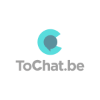GLOSWI visit report to Ethiopia

About this project
The Water-Energy nexus is of such importance in Ethiopia that both falls under the responsibility of the same ministry (Ministry of Water and Energy), with Irrigation (depending on the size of the plots) depending partially from other Ministries. Different responsibilities in the process of design, rehabilitation, maintenance and/or operation cascade down from Regional Water offices to Zonal and Woreda offices into Wash Cos at water point level.
Low water supply levels (with urban-rural disparities and between different regional states), limited financing as well as technical capacity constraints (especially relevant for solar solutions due to the acute shortage of qualified and trained technicians in government offices) are major concerns for the water sector in Ethiopia.
In terms of policy, the government Growth Transformation Plan and the One WASH National Programme (created by the government to improve water, sanitation and hygiene throughout the country) were presented as the main framework documents.
Investments in solar water schemes by donors, NGOs, private sector and agriculture are increasing rapidly. The upcoming national inventory of water points might be used to have an idea of the rate of solarizations achieved so far and to quantify the opportunities –in terms of investment and savings- that a wider adoption of solar water solution could bring about in different regional states.
ECONOMIC ANALYS SOLAR/HYBRID vs GENERATOR
Prices of pumps, generators, solar panels and other components were gathered and analyzed during the visits from private sector companies and implementing NGOs.
A Present-Worth Life Cycle Cost analysis (see Annex C ‘Technical Briefing – Cost Analysis’ for details in methodology) was performed in order to compare diesel generator stand-alone systems with equivalent solar stand-alone or hybrid (solar+generator) systems. Result can be seen in table 3 below, showing that in all cases there is a considerable cost reduction over life time of equipment (average of -47%, ranging from -23% to -72%) when solar solutions are used. The wide difference in terms of potential % cost saving among the different water schemes shows as well how useful cost- analysis could be for decision making in contexts where funding is limited.
For the 19 boreholes analyzed, an capital investment of 264,000 USD to use solar solutions instead of stand-alone generator systems, would mean an overall cost reduction over time of 2.27 million USD, or said in another way, for every 1 dollar invested to apply solar solutions, 8.6 dollars would be saved.
Additionally, while in all cases the capital costs for solar or hybrid equipment are higher than their equivalent stand-alone generator scheme, the break-even point of the extra investment is only 1.4 years on average (ranging from 0.5 to 2.8 years), making the investment worth it even for donors with narrow funding windows.
Finally to note that 1/3 (7 of the 19) of the boreholes analyzed could provide the daily water required with stand-alone solar systems, a proxy indicator of the great potential that solar solutions could offer to free large areas of the Region from its dependency on diesel supply.





